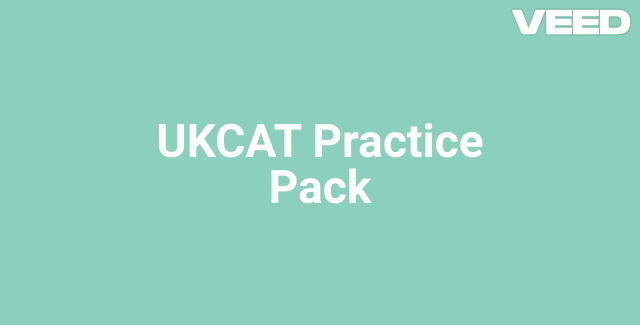Updated for the 2025 UCAT Exam
The UCAT (University Clinical Aptitude Test) is an admission assessment for prospective medical and dental students in the UK, Australia, and New Zealand. It evaluates various cognitive abilities and behavioral attributes across different sections. However, the main challenge is handling the tight time limits, mental fatigue, and intricate behavioral questions.
Why JobTestPrep?
| JobTestPrep | Medify | The Medic Portal | |
| Pricing | £49 (5 Months) | £150 (5 Months) | £500 (5 months) |
| Experience | Since 1992 | Since 2009 | Since 2013 |
| What's Included |
|
|
|
UCAT Preparation
Enhancing your skills to speed up your responses can significantly boost your UCAT score. Our psychometric experts and medical students have developed and refined an online UCAT practice pack to closely simulate the challenges you'll encounter and guide you through them:
-
Focus Your Practice: Identify your strengths and weaknesses with our UCAT diagnostic test, allowing you to concentrate on areas for improvement and maximize your score.
-
1600+ Practice Questions: Develop effective techniques and time-saving strategies with comprehensive answers and solving tips, helping you tackle challenging questions under the UCAT time pressure.
-
Master Your Situational Judgment Responses: Learn appropriate responses to medical scenarios and dilemmas with our exclusive guide, featuring 10 ethical rules doctors are expected to follow.
Take a look at our complete UCAT Preparation Pack

Interview Preparation
We understand that there’s a significant time gap between the UCAT and the interviews. That’s why we offer 6 months of access to our interview preparation resources, giving you the opportunity to excel at each stage.
Our psychologists are familiar with the specific questions asked in medical school interviews and the reasoning behind them. They will help you ensure that each anecdote and detail in your responses is relevant, effectively showcasing your suitability to become a doctor.
Begin by recording yourself answering general interview questions. As you review these recordings, focus on refining both the content of your answers and your overall presentation.
When you feel prepared, record your responses to the specific questions you’ll encounter in the medical interview and submit them for analysis. Our occupational psychologist will provide detailed feedback on all key aspects of your performance, including both verbal and non-verbal elements.
Who Will Evaluate Your Interview Performance?
Hello, I'm Gil, the head of JobTestPrep's team of occupational psychologists. With over 15 years of experience, an MA in Occupational Psychology, and an MBA in Business Management, I have accumulated a wealth of knowledge and expertise in recruitment. Over the years, my dedication and skill have helped thousands of medical students and job candidates succeed in their interviews and achieve their goals.
Have a question? Contact me at ask_the_team@jobtestprep.co.uk
Get a Glimpse of Our Interview Preparation Pack

- The Prep Pack includes unlimited practice recording attempts and 2 analyses with detailed feedback from our occupational psychologists.
- Each feedback will be sent back by mail within 3 business days of submission.

We Know Our Stuff
Our UCAT Prep wasn’t like the real thing?
You get your money back. Clean and simple.

- 3 Timed UCAT Simulations
- 36 Cognitive UCAT Mocks
- 6 Quantitative Reasoning Tests
- 9 Verbal Reasoning tests
- 10 Decision-Making Tests
- 11 Abstract Reasoning Tests - Subject-Specific Study Guides
- UCAT Situational Judgment Practice
- Doctor Principles Guide & Examples
- 4 Situational Judgment Tests
- A full Personality Test & Feedback - Medical Interview Prep with Personal Feedback by Our Psychologists
- Quality and Relevance of Answers
- Body language
- Tone of voice
- Communication skills
- Overall presentation



